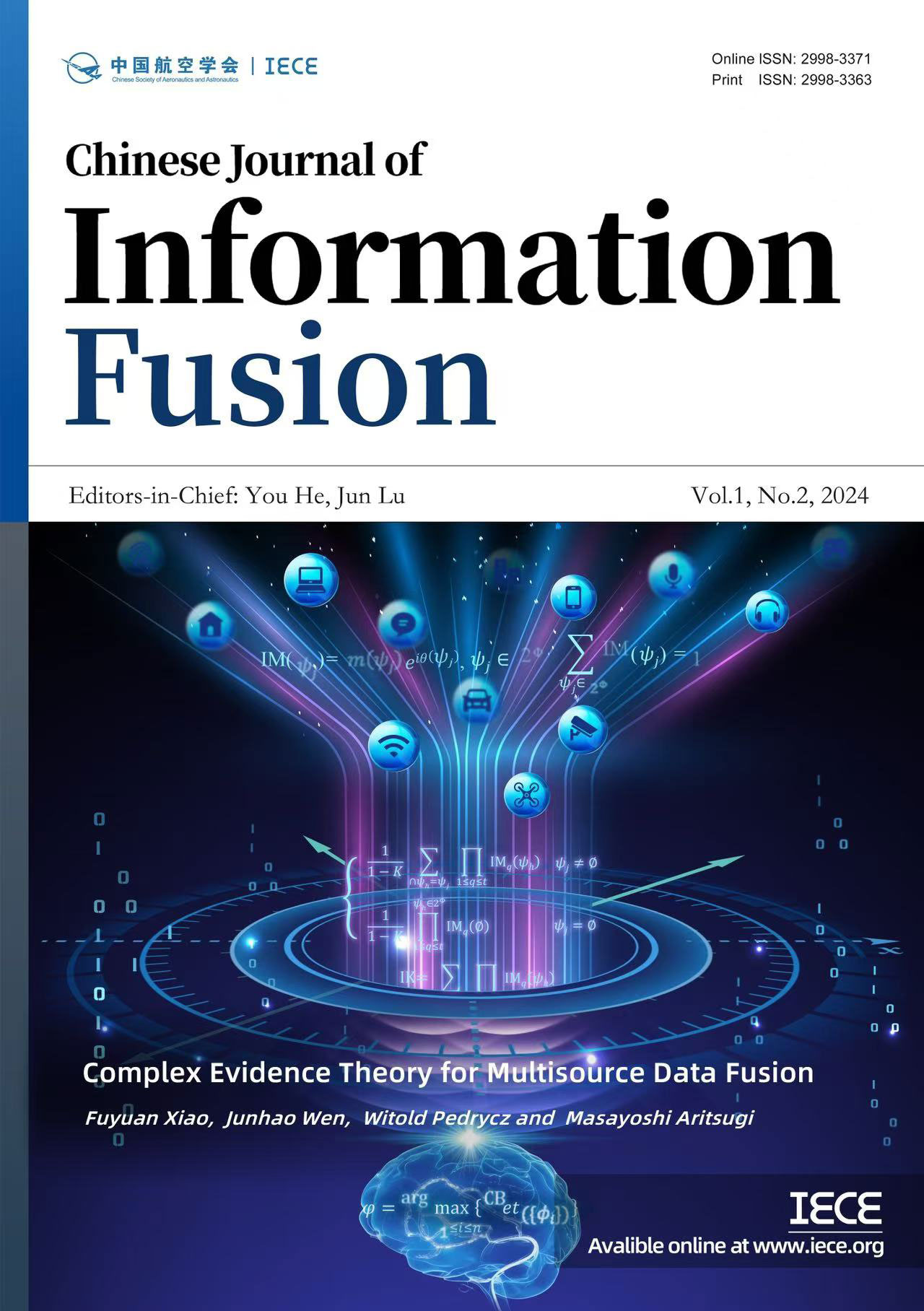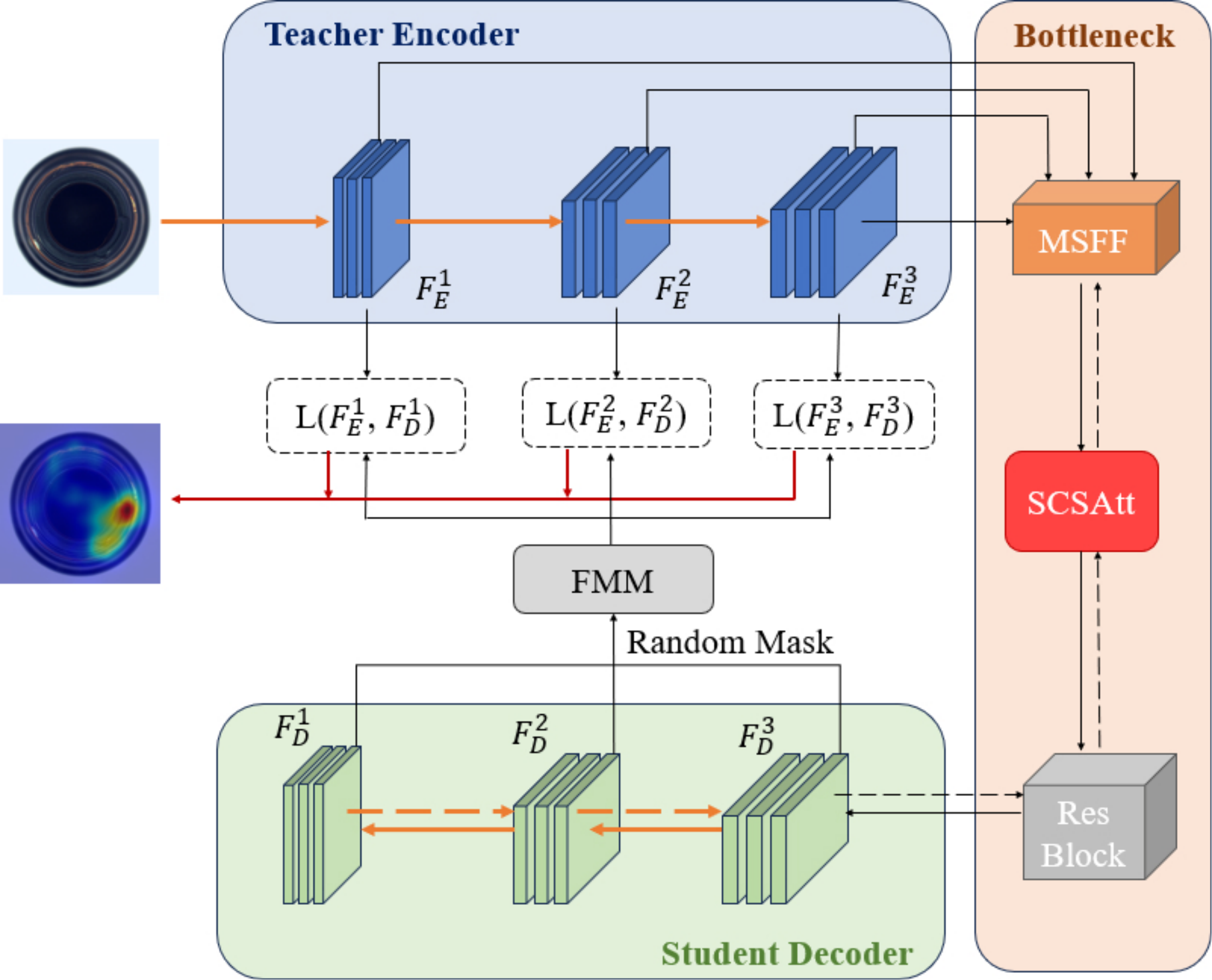Abstract
In the realm of industrial defect detection, unsupervised anomaly detection methods draw considerable attention as a result of their exceptional accomplishments. Among these, knowledge distillation-based methods have emerged as a prominent research focus, favored for their streamlined architecture, precision, and efficiency. However, the challenge of characterizing the variability in anomaly samples hinders the accuracy of detection. To address this issue, our research presents a novel approach for anomaly detection and localization, leveraging the concept of inverse knowledge distillation as its cornerstone. We employ the encoder as the guiding teacher model and designate the decoder as the learning student model, leveraging the structural disparity between the teacher-student (T-S) models to mitigate the generalization challenge. Additionally, we integrate an attention mechanism into the distillation framework to concentrate on the precise extraction and reconstruction of image features, thereby preventing the loss of nuanced details. To further refine the learning process, we have developed a feature mask generation module that minimizes the impact of spatial redundancy in the teacher's features, thereby enhancing the acquisition of pivotal feature information. Comprehensive experimental evaluations, carried out meticulously on the MVTec AD dataset, convincingly illustrate the superiority of our proposed method over prevalent methodologies in both detecting and pinpointing anomalies across a diverse range of 15 categories. The proposed methodology attains superior outcomes, evinced by the detection AUROC, localization AUROC, and localization PRO metrics achieving respective values of 99.1%, 98.5%, and 95.9%. To substantiate the significance of individual components within the model, we conduct ablation studies, thereby reinforcing both the efficacy and applicability of our approach.
Funding
This work was supported by the National Natural Science Foundation of China under Grant 62373102.
Cite This Article
APA Style
Qi P., Chai L., & Ye X. (2024). Unsupervised Industrial Anomaly Detection Based on Feature Mask Generation and Reverse Distillation. Chinese Journal of Information Fusion, 1(2), 160–173. https://doi.org/10.62762/CJIF.2024.734267
Publisher's Note
IECE stays neutral with regard to jurisdictional claims in published maps and institutional affiliations.
Rights and permissions
Institute of Emerging and Computer Engineers (IECE) or its licensor (e.g. a society or other partner) holds exclusive rights to this article under a publishing agreement with the author(s) or other rightsholder(s); author self-archiving of the accepted manuscript version of this article is solely governed by the terms of such publishing agreement and applicable law.


 Submit Manuscript
Edit a Special Issue
Submit Manuscript
Edit a Special Issue

